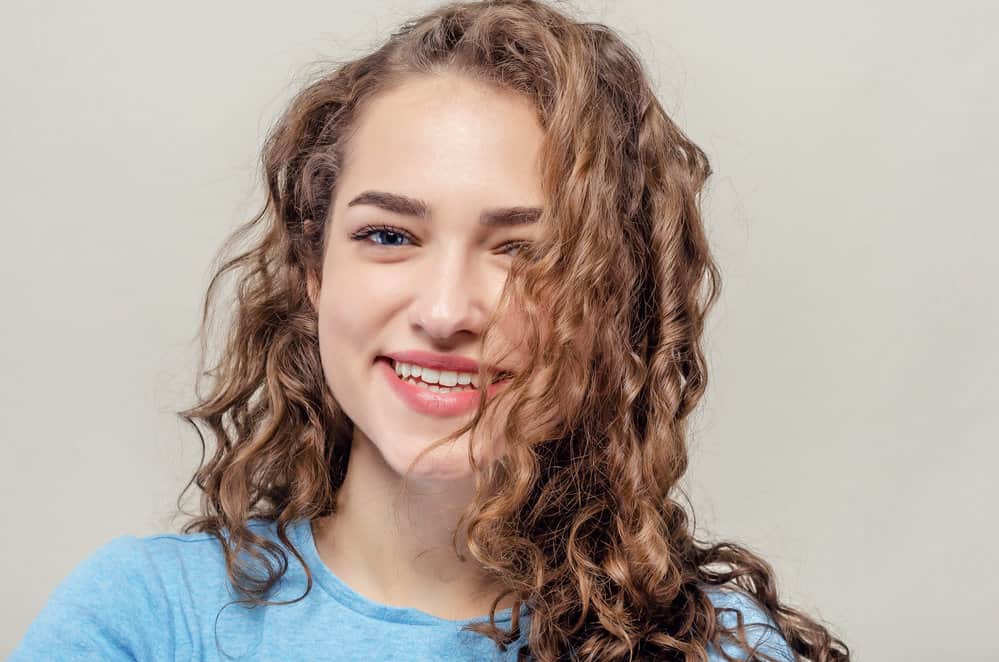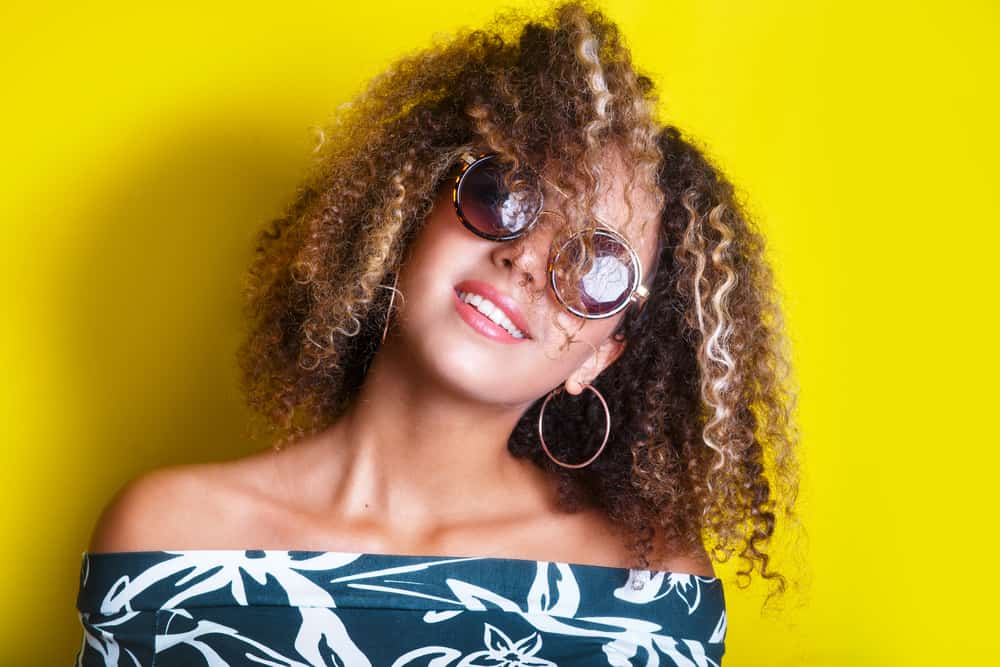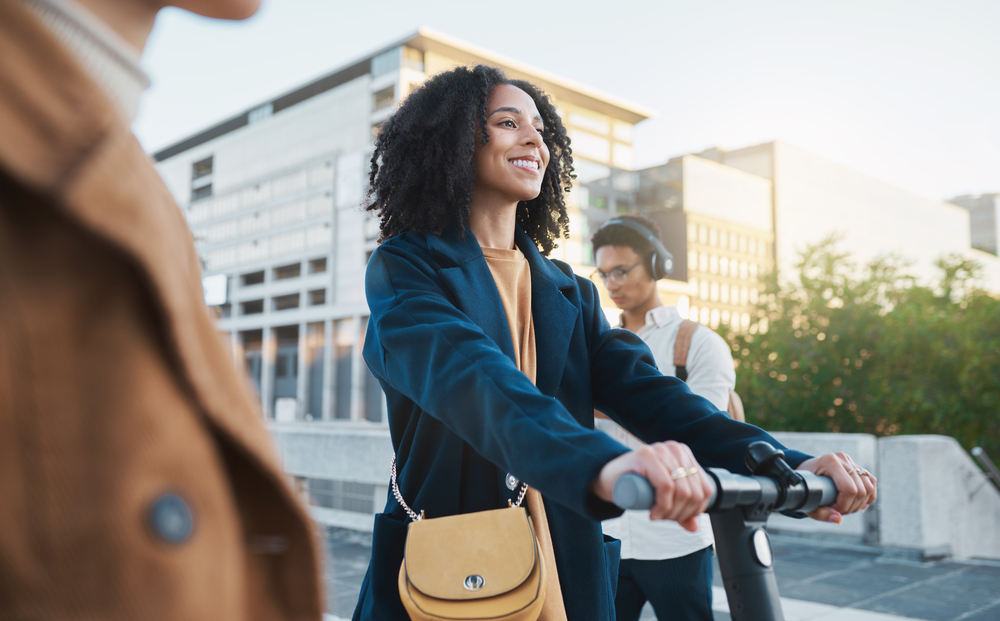
Your curls have a distinct beauty that’s undeniable, but there’s no denying that they need special care. The first step in understanding how to care for your curls is identifying your specific hair type. Pinpointing your hair type can yield helpful information about how best to manage it.
So, what type of curly hair do I have? In this article, we'll demystify curly hair classifications, providing essential tips on maintaining the health of your unique curls.
Table of Contents
What Type of Curly Hair Do I Have?
"Curly hair" is a broad term that encompasses a range of textures and curl patterns. The most commonly used hair classifying system is the Andre Walker Hair Typing System. It was created by renowned hairstylist, Andre Walker, who's widely known for his work with Oprah Winfrey.
His system focuses primarily on the outer structure of the hair. It starts from Type 1 for straight hair, progressing to Type 4 for kinky or coily hair. Each category is further divided into subtypes denoted by letters.

Types of Curly Hair
In this section, we’re going to dive deeper into each of the curly hair categories based on the Andre Walker hair typing system.
Type 2 Hair

Type 2 (Wavy Hair) is characterized by a distinct 'S' pattern that forms waves rather than curls (though many still recognize type 2 hair as curly hair). This hair type is further divided into three categories:
- Type 2A hair is lightly waved, often fine and thin. Its waves are malleable and can be easily straightened or curled.
- Type 2B hair has more prominent waves that begin to take shape from the mid-lengths down to the ends of the hair.
- Type 2C hair has well-defined waves that start from the roots, providing more volume. It's also prone to frizz.
Type 3 Hair

Type 3 (Curly Hair) forms spiral curls that maintain their shape regardless of the length of the hair.
- Type 3A curls are loose and have the circumference of sidewalk chalk. They are shiny with big, loose loops.
- Type 3B curls are more voluminous with a mix of ringlets and tighter curls. These curls are typically the size of a sharpie marker.
- Type 3C curls are densely packed curls, commonly referred to as 'corkscrew curls,' that are the size of a pencil or straw.
Type 4 Hair

Type 4 (Kinky or Coily Hair) is characterized by tight, often zigzag-patterned coils.
- Type 4A has a tightly coiled 'S' pattern that's visible whether the hair is stretched or not.
- Type 4B strands form a 'Z' shape and have a cotton-like feel. The hair bends with very sharp angles, and it often needs extra care due to its fragile nature.
- Type 4C is the most tightly coiled and can be very fragile. The curl pattern may not be visible in this hair type due to the tightness of the coils.
How to Identify Your Curly Hair Type
Though understanding your hair type goes beyond appearance, you can start the process of identifying your curl type by visually examining your hair. Here are a few steps to help you get started:
- Wash and Condition Your Hair: It's crucial to start with clean hair because buildup from products can alter the natural state of your hair. After washing, apply a conditioner and use it to detangle your curls and define your natural curl or wave pattern.
- Let Your Hair Dry Naturally: Avoid manipulating your hair as it dries. That means no brushing, no towel drying, and certainly no heat styling. All of these can alter your natural curl pattern. Allow your hair to air dry.
- Observe Your Hair: Once your hair is completely dry, observe your strands and curls. This is where you will begin to notice the natural texture and pattern of your hair.
Here's what to look for in each curl type:
- Type 2 (Wavy Hair): If your hair forms loose, long 'S' shaped waves, it falls into this category. This type does not have actual curls or coils, though many still call it curly.
- Type 3 (Curly Hair): This type has more defined 'S' shaped curls. The curls are springy and can range from loose, buoyant loops to tight, corkscrew curls.
- Type 4 (Kinky or Coily Hair): This hair type forms tight, small curls or zigzags right from the scalp. The curls can be either springy or have a more wiry texture.

Can You Have More Than One Curl Pattern?
Remember that it's quite common to have more than one hair type. For instance, you may find that you have 3A curls in the front of your head and 3B curls in the back. These variations may be due to a variety of factors, including genetic factors and how you handle and style your hair.
Hair damage from heat styling, chemical processes, or even environmental factors can also alter your curl pattern in certain areas, leading to a mix of textures.
Additionally, hair growth patterns and haircuts can impact how your curls appear. The length and weight of your hair can stretch out your curls, making them appear looser in some areas and tighter in others.
It's important to note that having multiple curl patterns is completely normal. Each head of hair is different, so it's perfectly okay if your hair doesn't fit neatly into a single category.
Instead of trying to force your hair into a specific type, it's better to embrace its unique variations. This way, you can customize your hair care routine to cater to all the different textures in your hair, ensuring that every curl gets the care it needs.

Caring for Your Curl Type
Caring for your curl type means taking into account the unique characteristics of your curl pattern. Here, we'll take a look at all the curl types and some tips to help you give it the best possible care.
Type 2 Curls
- Cleansing and Conditioning: Wavy hair tends to be oily at the scalp and drier towards the ends. Therefore, it's essential to maintain a good balance of moisture without going overboard. It's easy to make type 2 curls grungy and oily, so use lightly moisturizing products and avoid your scalp when applying them. It's also helpful to use volumizing hair products to fight root flatness.
- Styling and Maintaining: Because Type 2 hair can easily lose its definition and become frizzy, it's important to handle it gently when wet to maintain the wave pattern. After washing, try "scrunching" your hair with a microfiber towel or soft cotton t-shirt to encourage the natural wave pattern and reduce frizz. A lightweight mousse or styling cream can help define your waves without weighing them down. Remember to apply styling products when the hair is still damp for the best results.
- Preventing Damage: Like all hair types, Type 2 hair can suffer from heat and environmental damage. Minimize heat styling as much as possible, and when necessary, use a heat protectant to prevent damage. Regular trims can also help to keep your hair healthy and free of split ends.
Type 3 Curls
- Hydration and Conditioning: Type 3 curly hair can often be dry and prone to frizz, so maintaining proper hydration is crucial. This includes drinking plenty of water for internal hydration and applying external moisture in the form of hydrating hair products. Incorporate regular conditioning into your hair care routine to help keep your curls well-moisturized. Use a daily rinse-out conditioner after you shampoo, and apply a deep conditioner at least once a week for an added moisture boost. Products with natural oils such as jojoba, olive, and coconut oil can help moisturize and add shine.
- Gentle Detangling and Styling: Handle your curls gently to minimize breakage and maintain their shape. Always detangle with a wide-tooth comb and do so when your hair is wet and conditioned to reduce friction. When styling, avoid using heat tools as much as possible, as they can dry out and damage your curls. Instead, consider air drying and using curl-friendly styling products.
- Regular Trimming and Protective Styling: Regular trims can keep your hair healthy and prevent split ends. It's recommended to trim your hair every 6-8 weeks to maintain its shape and reduce split ends. When it comes to styling, consider styles that do not put too much tension on your hair and scalp.
Type 4 Curls
- Moisturization. The key to caring for Type 4 hair is intense hydration. Regularly deep condition your hair to infuse it with moisture and strengthen the hair shaft. Look for products containing natural moisturizers like shea butter, olive oil, or coconut oil. Also, incorporate a leave-in conditioner into your daily routine to keep your hair hydrated throughout the day. Be sure to seal in the moisture with natural oils like jojoba oil or castor oil, which can also promote hair growth and reduce breakage.
- Try Protective Styling. Protective styling is also a significant aspect of caring for Type 4 hair. Styles like twists, braids, or updos not only look great but also protect your hair from environmental damage and reduce the risk of mechanical damage from combing or manipulation. However, it's crucial not to leave these styles in for too long, as this can lead to matting or breakage. Always remember that your hair needs regular moisturizing and cleansing, even when in a protective style.
- Be Gentle. Pay attention to your hair's health and be gentle with it. Avoid harsh chemicals, excessive heat, and styles that pull at your roots or anywhere along the hair shaft.

Importance of Knowing Your Curly Hair Type
Knowing your hair type enables you to tailor your hair care routine to your specific needs, promoting the overall health and aesthetics of your curls.
For instance, different curl types require different hydration levels. Type 2 hair, being looser textured, gets more lubrication from scalp oils and tends to be oily as a result. In contrast, type 3 and 4 hair don't get much hydration from the scalp and tend to be dry.
Your hair type also impacts your product selection.
Lighter products are suitable for type 2 hair to prevent weighing down the waves, while richer, more hydrating products are beneficial for type 3 and 4 hair.
Finally, your hair type influences your styling techniques. Protective styles may be crucial for type 3 and 4 hair to prevent breakage, while type 2 hair may need more assistance with definition.

Other Things to Note About Your Hair Type
Identifying your hair type involves evaluating various attributes, including strand thickness, hair density, curl pattern, hair porosity, and elasticity.
The Thickness of Your Hair Strands
Hair strand thickness refers to the diameter of individual hair strands. There are generally three categories: fine, medium, and coarse or thick.
- Fine Hair: Fine hair has the smallest diameter. This type of hair can be weighed down by heavy products. It's also more prone to breakage, heat damage, and doesn't easily hold styles such as curls or voluminous looks.
- Medium Hair: Medium hair is a bit thicker than fine hair. It's often more resilient to damage and holds styles better. This is the most common hair thickness and is often considered the easiest to manage.
- Coarse or Thick Hair: This hair type has a very large diameter. It can withstand higher levels of heat and manipulation than thinner hair types.

Hair Density
Hair density refers to how many individual hairs you have on your head. It is usually categorized as low, medium, or high. Here's how to check your hair density: when your hair is dry and loose, grab a handful and see how much of your scalp is visible.
If a lot of your scalp is showing, you likely have low density hair. If your scalp is somewhat visible, you probably have medium density hair. If your scalp isn't visible at all, you likely have high density hair.
Knowing your hair density can be crucial for establishing a successful hair care routine. Here's how it impacts your regimen:
- Low Density Hair: If you have low density hair, your scalp is more exposed to the elements, so protecting your scalp becomes a key part of your routine. Be mindful of how much heat and chemicals you expose your hair to, as these can easily damage your hair and make it appear even thinner. Lightweight products that don't weigh down your hair can help with volume.
- Medium Density Hair: People with medium density hair often have more flexibility in their hair care routine. A balanced routine using moderate amounts of moisture and protein usually works well.
- High Density Hair: If you have high density hair, it's usually more resistant to styling due to its volume and has a higher propensity to frizz. To manage high density hair, using heavier products like butters and oils can help weigh down the hair a bit and reduce frizz. Regular deep conditioning treatments can also help in managing high-density hair by keeping it moisturized and keeping frizz at bay. Detangling with a wide-toothed comb or your fingers can also help manage this hair type without causing breakage.
Hair Porosity
Hair porosity is a measure of how well your hair absorbs and holds onto moisture. It's determined by the structure of your hair's cuticle layer (the outermost part of the hair shaft).
The positioning of these cuticles dictates how much moisture or hair product enters and leaves the hair shaft. Hair porosity is typically categorized into three types: low, medium (or normal), and high.
- Low Porosity Hair has tightly packed cuticles that lay flat, creating a smooth surface that resists moisture penetration. This can cause products to sit on the hair rather than being absorbed, leading to build-up. For low-porosity hair, it's beneficial to use heat (like a warm towel or a heat cap) during deep conditioning treatments to help open up the cuticles and allow moisture in. Lightweight, water-based products tend to absorb into low-porosity hair better than heavier creams and butters, which often lead to product buildup.
- Medium or Normal Porosity Hair has a compact cuticle layer that allows moisture in and out without much resistance. Normal porosity hair is usually on the healthier side and benefits from a balanced hair routine. A variety of products usually work well with this hair porosity type.
- High Porosity Hair has a highly raised cuticle layer, allowing for a lot of moisture to be absorbed. However, because the cuticles are so open, the hair can also lose moisture just as easily, leading to dryness. High porosity hair may result from environmental damage, heat styling, chemical treatments, or it can be genetically inherited. For high-porosity hair, heavier products like butters and oils can help seal in moisture, and using leave-in conditioners and regular deep conditioning treatments can also be beneficial.
So, there you have it - helpful information about how to determine your curly hair type. Understanding and embracing your curly hair type is an essential step towards better hair health and showcasing your tresses in the best way.
Remember, every curl is unique, just as each individual is unique.
So, even after gaining a greater understanding of your hair type, you may still need to do some trial and error to arrive at a hair routine that works for you. We hope you found all the information you were looking for, and we wish you the best with your hair.




